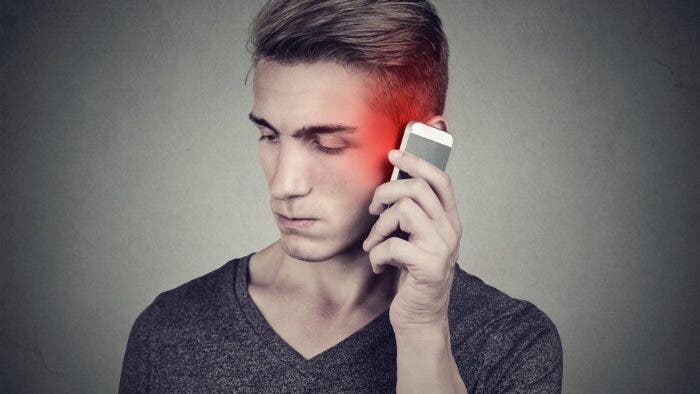Mobile phones have become an indispensable part of modern life, enabling communication and information access at our fingertips. However, concerns regarding the potential health effects of the radiation emitted by these devices have persisted. This article delves into the concept of the Specific Absorption Rate (SAR), a crucial metric for understanding and regulating mobile phone radiation absorption by the human body.
Mobile Phone Radiation and the Specific Absorption Rate (SAR): Understanding the Science Behind Safety

Demystifying the SAR Index
The radiation emitted by mobile phones falls within the non-ionizing range of the electromagnetic spectrum. Unlike ionizing radiation (X-rays, gamma rays) which can damage DNA, non-ionizing radiation possesses insufficient energy to directly break molecular bonds. However, this radiation can be absorbed by tissues, leading to a potential heating effect.
The SAR index quantifies the rate at which this radiofrequency (RF) energy is absorbed by human tissue. It is expressed in watts per kilogram (W/kg) and reflects the average amount of power deposited per unit mass of tissue within a specific volume. Regulatory bodies around the world, including the European Union (EU), establish maximum permissible SAR values to ensure mobile phone safety.
SAR Measurement and Regulation
The SAR value reported by a mobile phone manufacturer represents the highest measured value obtained under standardized test conditions. These tests typically involve placing the phone in close proximity to a phantom – a tissue-simulating material – and transmitting at maximum power. Multiple measurements are taken at different positions around the phone, and the highest value is used as the reported SAR. This approach ensures a conservative estimate of potential exposure under real-world conditions.
The EU, for instance, has established separate maximum permissible SAR values for the whole body (0.08 W/kg) and for a part of the body (head: 2 W/kg). These limits are set well below the levels at which any significant thermal effects have been observed. Additionally, the SAR measurement considers a 10-gram mass of tissue averaged over a 6-minute interval, further reflecting a realistic scenario of continuous exposure.
The 20 mobile phones that emit the most SAR radiation

The 20 cell phones that emit the least SAR radiation

Real-World Considerations for SAR
It’s important to understand that the reported SAR index represents a worst-case scenario. In everyday use, several factors contribute to lower actual exposure levels compared to the tested values:
- Network Signal Strength: A strong network signal translates to lower power transmission from the phone, resulting in reduced SAR. Conversely, weak signal conditions necessitate higher power output from the phone to maintain connection, potentially leading to a slightly higher SAR.
- Distance: The intensity of radiofrequency radiation follows the inverse square law. Doubling the distance between the phone and the body reduces the SAR by a factor of four. This principle highlights the benefit of using a headset or speakerphone to keep the phone away from the head during calls.
- Usage Patterns: Most users don’t hold their phones to their heads for extended durations. Additionally, phone calls typically involve intermittent talking and listening, further reducing average exposure levels compared to the continuous transmission simulated during testing.
SAR and Mobile Phone Safety: A Look at the Evidence
Extensive research has been conducted to investigate the potential health effects of mobile phone radiation. While some studies have suggested possible associations with certain health conditions, the evidence remains inconclusive. Renowned international organizations like the World Health Organization (WHO) have classified radiofrequency fields from mobile phones as “possibly carcinogenic to humans” based on limited evidence. Notably, this classification indicates a potential risk but does not confirm a causal link.
Responsible Use and Regulatory Assurance
Given the ongoing research, it’s prudent to adopt a precautionary approach. Here are some tips for minimizing potential exposure:
- Utilize speakerphone or a headset: This increases the distance between the phone and the head, significantly reducing SAR.
- Text instead of calling: Texting eliminates the need to hold the phone near the head.
- Limit long calls: Shorter call durations reduce overall exposure.
It’s important to emphasize that mobile phone manufacturers are subject to rigorous safety regulations. The reported SAR value serves as a confirmation that the device complies with established safety standards.
Ultimately, focusing solely on the SAR index when choosing a mobile phone may not be the most effective approach. It’s more crucial to ensure the chosen device adheres to regulatory requirements and adopt responsible usage practices to minimize potential exposure.
Verdict
The SAR index plays a critical role in ensuring the safety of mobile phones. By understanding this metric and the factors influencing real-world exposure, users can make informed choices regarding mobile phone use. Continued research will further refine our understanding of the potential health effects of radiofrequency radiation. However, adhering to responsible usage practices and utilizing regulatory safeguards provide a robust framework for safe mobile phone use.
Tips and Tricks for Minimizing Mobile Phone Radiation Exposure
While the SAR index offers valuable information, here are some practical tips and tricks you can implement to further minimize your exposure to mobile phone radiation:
Network and Signal Strength:
- Prioritize strong network areas: Whenever possible, make calls and use data services in areas with strong signal strength. This reduces the power your phone needs to transmit, lowering SAR.
- Airplane mode in low-signal areas: If you’re in a weak signal zone (e.g., rural areas, elevators), consider switching your phone to airplane mode. This disables cellular transmission altogether, eliminating radiation exposure. Remember to re-enable cellular data or Wi-Fi when you return to a strong signal area.
Distance is Your Friend:
- Speakerphone or headset: Utilize a speakerphone or wired headset whenever possible during calls. This increases the distance between the phone and your head, significantly reducing SAR. While Bluetooth headsets offer some distancing benefit, wired headsets eliminate the additional radiation from Bluetooth connectivity.
- Carry strategically: When not in use, avoid carrying your phone directly on your body. Opt for a bag, purse, or backpack instead. This minimizes continuous close contact with your body.
Usage Habits:
- Keep calls short: The longer a call lasts, the greater the overall exposure. Consider texting or using messaging apps for quick communication, reserving calls for situations requiring extended conversation.
- Nighttime considerations: If concerned about potential sleep disruption, keep your phone away from your bed at night. Turn it off completely or switch to airplane mode to eliminate radiation while you sleep.
Additional Considerations:
- Research phone models: While focusing solely on SAR may not be the best approach, some resources allow you to compare SAR values of different phone models. This information can be a factor when choosing a new phone, but prioritize models that comply with regulatory standards.
- Third-party accessories: With caution, explore the market for radiation-shielding phone cases or pouches. However, be wary of unsubstantiated claims, and prioritize reputable brands with verifiable testing data. Remember, responsible usage habits remain the most effective approach.
Remember:
These tips and tricks aim to provide additional layers of precaution. Regulatory bodies have established safety standards, and phones adhering to these standards are generally considered safe for everyday use. By implementing these strategies and maintaining a balanced approach, you can enjoy the benefits of mobile phone technology while minimizing potential concerns.





